APVV-15-0302
Cytoarchitecture of calcium signalling in cardiac myocytes in the development of myocardial hypertrophy (CAMYS)
Principal Investigator: Alexandra ZahradníkováDuration: July 2016 – June 2019
|
Annotation:In early phases of many cardiovascular diseases, calcium signalling deteriorates and cardiomyocyte hypertrophy is activated. Calcium signalling, in addition to control of contractile function, modulates many of signalling pathways and metabolism of myocytes. Therefore, disruption of calcium signalling in either systolic or diastolic phase may be a consequence, but also the cause of the maladaptive reaction of myocytes to overload. We hypothesize that processes related to hypertrophy lead to changes in distribution of endo/sarcoplasmic reticulum elements responsible for calcium signalling and for proteosynthesis, and to associated changes in expression and distribution of calcium signalling proteins. This study aims to determine differences in the myocyte calcium signalling system of myocardium adapting to pathological or physiological load and to compare them with development of the myocyte calcium signalling system during postnatal maturation of myocardium. The status of the calcium signalling system will be analysed in models of myocardial load in laboratory rats: a/ sedentary model – animals in standard cages, b/ model of physiological load – animals in cages with a running wheel, 3/ model of pressure overload – surgical obstruction of ascending aorta, and d/ growth model of hypertrophy – postnatal development of myocardium. State-of-the-art methods of electrophysiology, molecular biology and ultrastructural microscopy will be used to characterize quality and distribution of calcium signals, the extent and distribution of smooth and rough sarcoplasmic reticulum, and of expression, localization and co-localization of calcium signalling proteins. We expect that the multidisciplinary approach supported by the expertise of team members will allow interpreting cellular and molecular mechanisms of calcium signalling and drawing conclusions relevant to understanding mechanisms of heart failure that will aid development of new therapeutic and preventative procedures. |
Keywords:myocardium, hypertrophy, postnatal development, physiological load, pressure overload, cardiac myocyte, calcium signalling, cytoarchitecture, reticular membrane system, protein expression, protein co-localization |
Objectives:The aim of the project is to elucidate the role of molecular and cellular factors of diastolic and systolic calcium signalling during development and in early stages of adaptation of cardiac myocytes to stress stimuli leading to myocardial hypertrophy. The aim will be reached by examining local calcium release in spontaneous and evoked calcium sparks, by examining the activity of single RYR2 and IP3R2 channels and membrane compartment markers and by examining the microarchitecture of the myocytes in experimental models of physiological and pathological myocardial hypertrophy. |
Results:The project focused on the study of calcium signalling and of the relevant microarchitecture of myocytes during myocardial adaptation to physiological and pathophysiological load. We have identified and characterized the main molecular and cellular factors determining the function of the calcium signalling system of cardiac myocytes in early stages of heart failure development and we demonstrated their participation in myocardial remodelling. We characterised the changes of ultrastructure and calcium signalling in two models of physiological cellular hypertrophy and in two pathological models. We have shown that the physiological and pathological models differ in the character of changes in the kinetics of calcium signalling: while in physiological cellular hypertrophy calcium signalling is accelerated, in early phases of pathological changes the kinetics of calcium signalling is slowed down. Ultrastructural and molecular changes differ between individual models. The main changes observed in both, physiological and pathological models are: changes in the volume density of dyads, in the structure of dyads, in the expression of membrane proteins, and in the character and volume density of mitochondria. |
Publications: |
| Grimbert L, Sanz MN, Gressette M, Rucker-Martin C, Novotova M, Solgadi A, Karoui A, Gomez S, Bedouet K, Jacquet E, Lemaire C, Veksler V, Mericskay M, Ventura-Clapier R, Piquereau JM, Garnier A (2021): Spatiotemporal AMPK alpha 2 deletion in mice induces cardiac dysfunction, fibrosis and cardiolipin remodeling associated with mitochondrial dysfunction in males only. Biol Sex Differ, vol 12: 52. doi: 10.1186/s13293-021-00394-z. | |
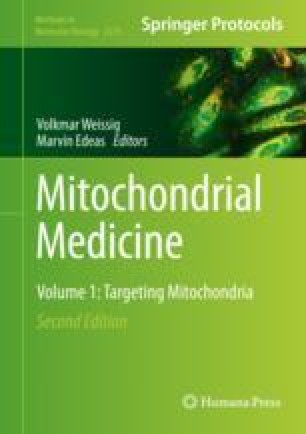 |
Marcek Chorvatova A, Cagalinec M, Chorvat D Jr (2021): Time-resolved imaging of mitochondrial flavin fluorescence and its applications for evaluating the oxidative state in living cardiac cells. Mitochondrial Medicine. Methods in Molecular Biology, vol 2275, chapter 26: 403-414. Humana, New York, NY. Volume 1: Targeting Mitochondria, Weissig V., Edeas M. (eds), ISBN 978-1-0716-1262-0, doi: 10.1007/978-1-0716-1262-0_26. |
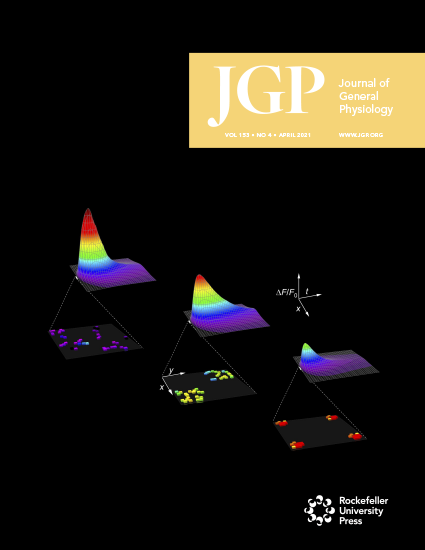 |
Iaparov B, Zahradnik I, Moskvin AS, Zahradnikova A (2021): In silico simulations reveal that RYR distribution affects the dynamics of calcium release in cardiac myocytes. J Gen Physiol 153: e202012685 doi: 10.1085/jgp.202012685. |
 |
Kurekova S, Plaas M, Cagalinec M (2020): Short Communication: Lack of functional wolframin causes drop in plasmalemmal sodium-calcium exchanger type 1 expression at early stage in rat model of Wolfram syndrome. Gen Physiol Biophys 39: 499–503 doi: 10.4149/gpb_2020017. |
 |
Iaparov B, Zahradnik I, Moskvin AS, Zahradnikova A (2020): Synergy of calcium release site determinants in control of calcium release events in cardiac myocytes. bioRXiv : doi: https://doi.org/10.1101/2020.08.26.260968. |
 |
Zahradnikova A, Iaparov B, Zahradnik I (2020): The problem of accuracy in single-channel open probability measurements. Prog Biophys Mol Biol 157: 94-106 doi: 10.1016/j.pbiomolbio.2020.05.002. |
 |
Novotova M, Zahradnikova A Jr, Nichtova Z, Kovac R, Kralova E, Stankovicova T, Zahradnikova A, Zahradnik I (2020): Structural variability of dyads relates to calcium release in rat ventricular myocytes. Sci Rep 10: 8076 doi: 10.1038/s41598-020-64840-5. |
 |
Pires Da Silva J, Monceaux K, Guilbert A, Gressette M, Piquereau J, Novotova M, Ventura-Clapier R, Garnier A, Lemaire C (2020): SIRT1 Protects the Heart from ER Stress-Induced Injury by Promoting eEF2K/eEF2-Dependent Autophagy. Cells. 9: E426 doi: 10.3390/cells9020426. |
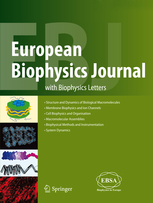 |
Iaparov B, Moskvin AS, Zahradnik I, Zahradnikova A (2019): Stochastic and deterministic approaches to modelling calcium release in cardiac myocytes at different spatial arrangements of ryanodine receptors. Eur Biophys J 48: 579–584 doi: 10.1007/s00249-019-01378-z. |
 |
Skrabanek P, Zahradnikova A Jr (2019): Automatic assessment of the cardiomyocyte development stages from confocal microscopy images using deep convolutional networks. PLoS One 14: e0216720, doi: 10.1371/journal.pone.0216720. |
| Cagalinec M, Zahradnikova A, Zahradnikova A Jr, Kovacova D, Paulis L, Kurekova S, Hotka M, Pavelkova J, Plaas M, Novotova M, Zahradnik I (2019). Calcium signaling and contractility in cardiac myocyte of wolframin deficient rats. Front Physiol 10: 172, doi: 10.3389/fphys.2019.00172. | |
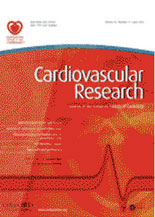 |
Prola A, Nichtova Z, Pires Da Silva J, Piquereau J, Monceaux K, Guilbert A, Gressette M, Ventura-Clapier R, Garnier A, Zahradnik I, Novotova M, Lemaire C (2019): Endoplasmic reticulum stress induces cardiac dysfunction through architectural modifications and alteration of mitochondrial function in cardiomyocytes. Cardiovasc Res 115: 328-342, doi: 10.1093/cvr/cvy197. |
 |
Hotka M, Zahradnik I (2017): Reconstruction of membrane current by deconvolution and its application to membrane capacitance measurements in cardiac myocytes. PLoS One 12: e0188452. |
 |
Mackova K, Zahradnikova A Jr, Hotka M, Hoffmannova B, Zahradnik I, Zahradnikova A (2017). Calcium release-dependent inactivation precedes formation of the tubular system in developing rat cardiac myocytes. Eur Biophys J 46: 691-703. |
| Faltinova A, Tomaskova N, Antalik M, Sevcik J, Zahradnikova A (2017). The N-terminal region of the ryanodine receptor affects channel activation. Front Physiol 8: 443. | |
 |
Misuth M, Joniova J, Horvath D, Dzurova L, Nichtova Z, Novotova M, Miskovsky P, Stroffekova K, Huntosova V. (2017): The flashlights on a distinct role of protein kinase C δ: Phosphorylation of regulatory and catalytic domain upon oxidative stress in glioma cells. Cell Signal 34: 11–22. |
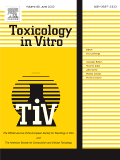 |
Huntosova V, Novotova M, Nichtova Z, Balogova L, Maslanakova M, Petrovajova D, Stroffekova K (2017): Assessing light-independent effects of hypericin on cell viability, ultrastructure and metabolism in human glioma and endothelial cells. Toxicol In Vitro 40: 184–195. |
 |
Novotova M, Tarabova B, Tylkova L, Ventura-Clapier R, Zahradnik I (2016): Ultrastructural remodelling of slow skeletal muscle fibres in creatine kinase deficient mice: a quantitative study. Gen Physiol Biophys 35: 477–486. |

 contact
contact
